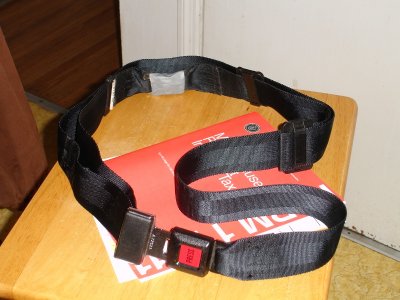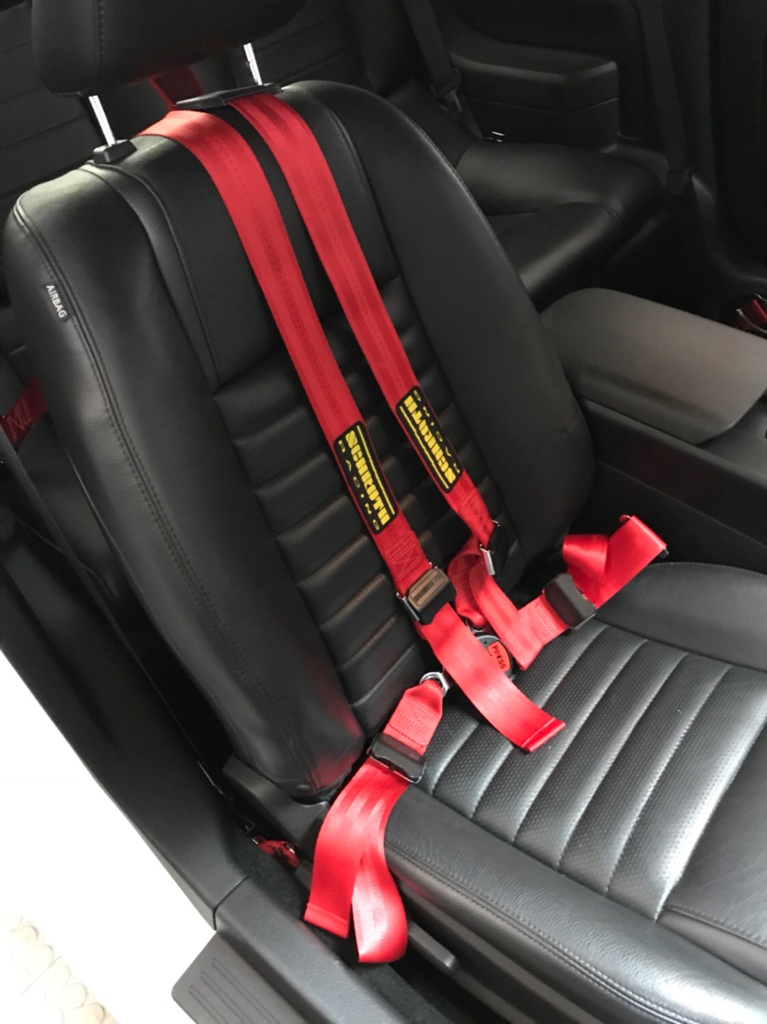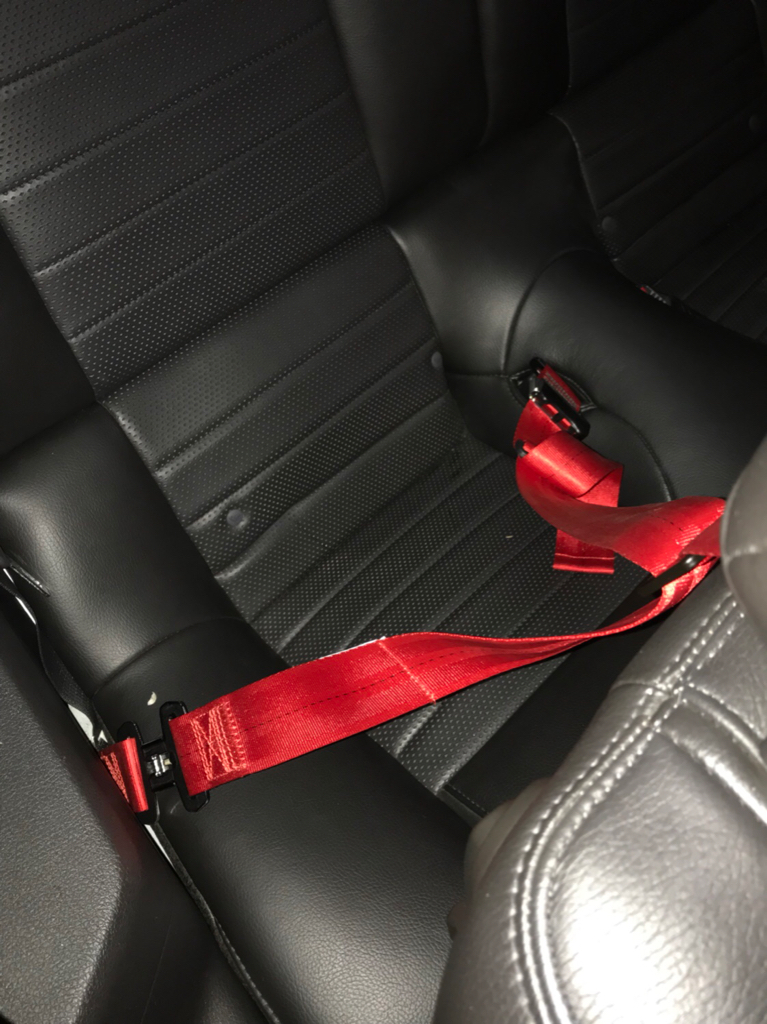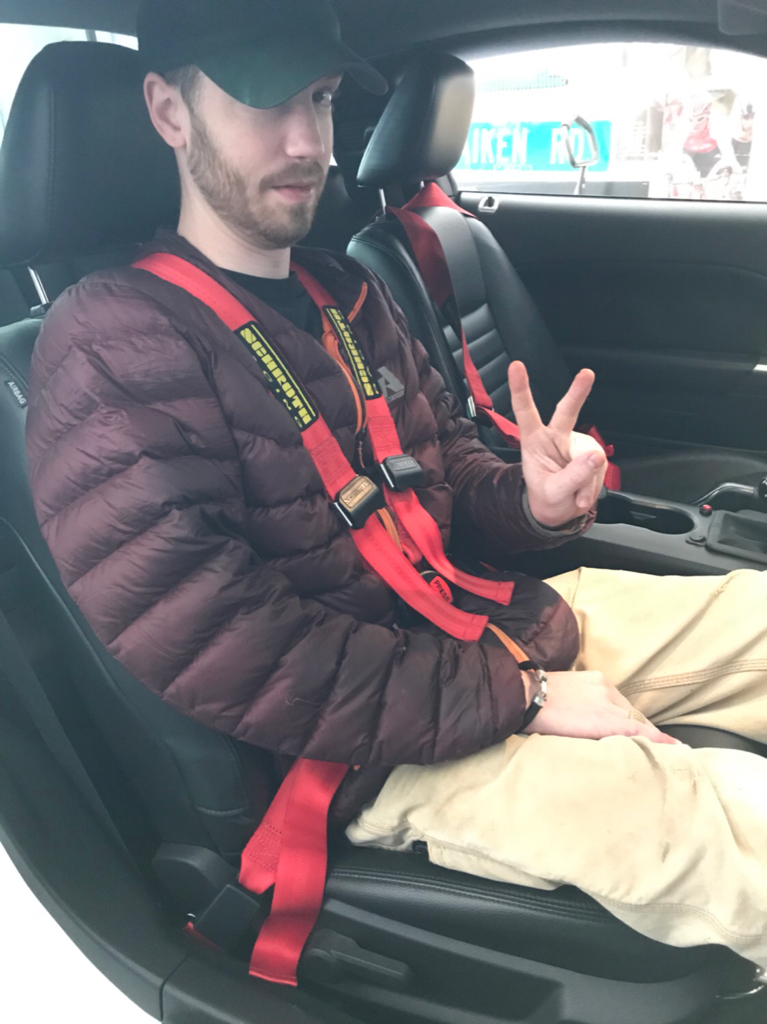Guys, think about safety gear as part of a comprehensive package, and a lot of this will make sense. The OEM 3-point belt will stretch due to the lengths of the legs involved, and that will decelerate your torso and head. This *RELATIVELY* gentle deceleration is complemented by those soft, pillowy airbags (again, relatively speaking) which are the final link in the impact mitigation. This is, of course, looking at a frontal impact, but as a system, it works, and works well. LOTS of testing went into the safety systems in modern cars, and you'd be foolish to simply discard them because they're not efficient at locking you into the seat in high-G cornering situations.
In comparison, the multi-point belt (6-point for example) is designed to clamp your torso in the seat, and generally anticipates the use of a HANS device (or analog thereof) to reduce or eliminate head and neck movement. A 3-point will let your body slump forward, the multi-point won't.
Where things get tricky is with the fitment of the multi-point belt. A 3-point, virtually by definition, will place the lap portion of the belt across the iliac crest of the pelvis, which is the strongest portion of that bone. As the length of the belt isn't that long, it won't stretch that much. Now, contrast that with a 6-point harness. There are two, shorter lap belts that meet at a central buckle. IF those aren't installed at the right angle, the buckle will ride up, off the pelvis, and onto the abdomen, which is filled with all kinds of squishy stuff like liver, spleen, intestines, and if you go back far enough, kidneys. NOT what you want to use to hold yourself in a seat in the event of a crash. The shoulder belts of the 6-point will tend to pull the buckle up and off the iliac crest as well in an impact, as a result of your torso trying to go forward. The final two belts, the ANTI-SUBMARINE belts, are there for one reason and one reason only: to keep that all-important lap belt across your pelvis. They don't grab your legs and keep you from sliding forward or under, the pull DOWN on the lap belt, and THAT keeps you from sliding forward and under.
Where the real issue comes in is with belt mounting and fitment. I can't count how many times I've seen multi-point belts installed improperly, with poor angles on the lap belts, bad anchor points for the shoulder belts, and improper routing of the anti-subs. I've also wound up holding a student on grid while I get my passenger-side belts adjusted to be even remotely safe. I have, no kidding, jumped into a car and found the anti-subs would let the buckle ride up at mid-chest height. Even if you pull the laps brutally tight, as soon as you tighten the shoulders, the buckle rides up. This is NOT a safe solution if you're going to be out on track or on the street. Before you use a multi-point belt, it needs to be properly fitted for the driver (and instructor, if any). I'm 5'10" and 155lbs, and if my 5'8" 225lb buddy hops in, it's not a trivial exercise to get him properly snugged in. GOOD belts help. I use the Schroth Enduro harness in my car, and the adjusters are designed for multiple-driver situations. Very quick, very slick, very easy to manipulate with gloves on, and very expensive. If you're the only guy driving your car, that's an expense you don't need to carry, particularly since the belts are 5-year items.
Speaking as a racer and an instructor, stick with the stock 3-points until the time comes when you're willing to make a commitment to a complete safety package. I would even go so far as to say that until you're ready to cage the car, stick with the OEM stuff. No, it won't lock you in place like a 6-point will. But the 6-point requires a proper racing seat (which is yet another benefit, and yet another cost), harness bar or cage, and a HANS to function properly. They're also illegal on the street. Whether that makes sense or not is open for debate, but that's just the way it is... If a paramedic ever needed to get you out of a car in a hurry, trying to find and then figure out a latch-link buckle is not to your advantage. With a 3-point, you can cut one belt (lap opposite the buckle) and the occupant is OUT of the car. Not so much with a 6-point.
The bottom line in safety is to look at the reasons you want to make a change. If the only one is that you slide around in the seat and the 3-point is too much hassle to ratchet tight, then just imagine how simple and easy it'll be to climb in past your door bars, drop down into a full containment seat, get the buckle out from under your ass, and then find the other four belts, click them in the right holes, and then pull them tight... MUCH easier to click the OE belt in! Now, if you're moving at the speed of heat and just passed a Tomahawk missile on the last straight, then maybe you should think about a comprehensive package upgrade. But at that point, the needle is so deep in the vein, you're probably shopping trailers and tow vehicles as well...






